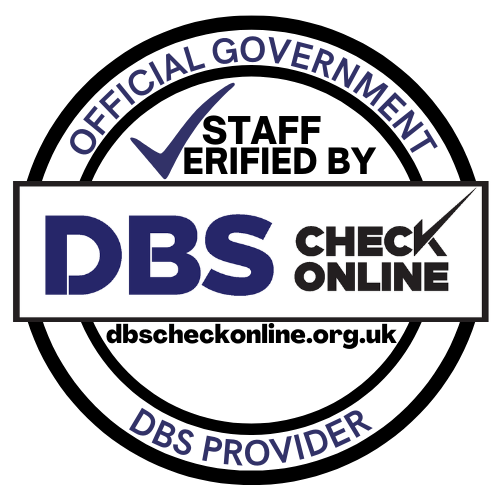Written By Jolene Dias

Inclusive Education
My name is Jolene Dias. I have been teaching the children with special needs for the last 10 years. I have taught children on the autism spectrum, Down syndrome, physical disabilities and learning disabilities. The main primary element that all these students need is love and acceptance from their music educators.
Recognition Of Instruments
Music Instrument knob puzzles helped children with autism and down syndrome recognition of various instruments. I used the Melissa and Doug knob puzzle which had the sound of various instruments too. My students use to enjoy this activity as they were excited to hear the new sound of an instrument when the piece was fixed.
Music Instrument flash cards were the best way in recognising different instruments and the way they look. Students with special needs got to increase their knowledge in knowing the name of each instrument. There was a time “Adal” told me, “teacher, every time I tell you the correct name, I want to hear the sound of that instrument on the computer.” And every time I would play it on the computer, he would be happy. Later I was even more happy when his parents took him to the Musical Instruments store, and he would point out to each instrument with their correct name. Nothing could be more satisfying for his parents to see their son recognising instruments so well.
This would help them recognise instruments in any music store or when played in an orchestra.
there was a game undertaken called the handbell game. Where there were 8 handbells of various colours. Special handbell staves were designed for students to read. The notes were read as per the colour. and to each colour was the name. so, every time, I said red, the students would recognise the red bell along with the letter C. They would pick the red bell and shake it vigorously to play the sound. Usage of handbells improved the child’s concentration levels and colour recognition to a great extent.
Learning Tempo Markings
I introduced the concept of allegro and largo to teach the student how fast or slow they should play on an instrument. At the initial stages all students who were highly disabled were made to buy toy keyboards. The terms allegro and largo were recognised on the speed I used to pronounce the words. So, every time I would shout allegro, I would say the word as quickly as possible. And would say largo in slow motion. Students with visual impairments would understand it with their sense of hearing. Students with hearing and speech impairments would watch my lip movement and would comprehend what I am saying. I made students play notes from C to G using all 5 fingers. and so, every time I would say allegro, students would play it quickly and very slow when largo. This was a very good intervention as I felt, students would comprehend the task well.
Learning Dynamics
The concept of piano which means soft and forte which means loud was very easily taught to the students who were verbal. While they would come with an electric instrument like the keyboard, I would increase the volume or play with extra force to demonstrate forte and reduce the volume or play softly to demonstrate piano. The visually impaired could easily comprehend this with the intensity of volume. The hearing impaired had a bit problem when understanding this concept so I would use the British Sign Language to demonstrate more and open my mouth wide to indicate loud and soft.
Teaching Time Value of Notes In An Inclusive Classroom
This can be very challenging especially to students with students with learning disabilities with low IQ. The first step I had undertaken was giving them dot to dot activity sheets where students could trace out the outline of each note. The second step, I made each student play with clay and mould the clay in shape of the instruments. I had to do the caterpillar activity for certain students by finger drawing the shape of the note on the back of another student. We had to play the game of dumb charades where a student would come in front and act on the shape of the note and the others would guess the note, whether it is a semibreve, or a minim, or a crochet, or a dotted minim, or a quaver. It was fun! We used the sand tray too where each student would finger draw the note and recite the count. I gave my students various percussion instruments like a pair of maracas, a cabasa, or a pair of bongos where they could play the percussion instrument after recognising the time value of a note. The usage of number mats was very useful to me. Students who knew the time value of notes, I would still revise the same concept using number mats. I would display a semibreve flash card, and the students would stand on number 4 mat block. My students also loved the game of “hop the number” where I would show a crotchet flash card and the student would hop once. Likewise, if I would show a a minim flash cards then the student would hop twice.
Teaching Note Names to Children with Special Needs
While the mainstream students would learn note names very quickly, sometimes at the first glance, teaching notations on the stave can be very challenging especially when it comes to children with learning disability. Children with low IQ level have difficulties have difficulty in recognising a line and a space on the stave.
A lot of times, students find it difficult in recognising notes on sheet music. Some of the methods I used for effective learning of note names were: –
- Usage of flash cards. But to those with special needs, I would colour every line with a different shade. And use different shades for every colour.
- I would use a palm to represent a stave where the thumb would represent the first line and the pinky would represent the fifth line and the space between 2 fingers would represent the spaces on the stave. Then I would take an eraser to represent a note. For example, I would put the eraser on the 3rd finger and ask them the note name and they would say B in the treble clef.
- Usage of white boards which had a stave printed on it. I would use acronyms to represent the note names on the stave. For example, the notes on every line on the stave would be Eat Good Bread Dear Father and, on the space, would be FACE.
Teaching in an inclusive classroom and dealing with various challenges can be extremely challenging but with all these teaching strategies, the students would finally learning any task and it would be very highly rewarding when these students with special needs would be performing better and playing well for any school concerts.

